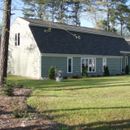Indoor Swimming Pool Wall Detail
I have been asked to finish an indoor pool that was built about 18 years ago. The building has stood up well and the only signs of damage were from water intrusion at an exterior door. The building was not heated and the pool was not heated during this time with exhaust only venting, which is why I believe there has been no notable moisture damage.
The renovated room and pool will be heated with a Geo thermal system designed for the room and the humidity. The room is attached to the existing home. 2 inches of spray foam have been applied to all adjoining walls, all doors to the room are exterior insulated doors. The windows and doors are all new and double payne insulated. The GEO system will blow on all doors and windows in addition to the room in general and will included an exhaust only fan to promote negative pressure in the building.
.
Currently the walls are 2×6 @ 16 oc, uninsulated with continuous plywood exterior sheeting, Typar rain screen and vinyl siding.
The roof is a gramble design and about 18 to 20 feet at the center, with plywood decking and 15 lb felt with 30 year shingles.
After reading every post on this site that mentions a pool I understand the consensus is that it is folly to even undertake this project. I have also gleaned the best insulation and vapor barrier design may be the following:
Dense pack the stud bays with cellulose
Cover with 2 inches of foam panels sealed at all joints and at all fasteners.
1/2 inch Dens Armor Plus
Tile with in the first 24 inches of the floor
High quality paint sealer
Treat the ceiling the same as the walls only thicker
Spray the walls adjoining the house to full 5.5 inch depth.
I am in Zone 4A and with in 20 miles of the Atlantic Coast.
If this is not the best wall please recommend a better approach.
What other details should I consider.
GBA Detail Library
A collection of one thousand construction details organized by climate and house part










Replies
Allen,
I'm a little confused. You wrote that "Currently the walls are 2x6 @ 16 oc, uninsulated," and also that "2 inches of spray foam have been applied to all adjoining walls."
So, how many of the walls are insulated?
I certainly wouldn't insulate a swimming pool room with cellulose. If I had to choose an insulation to install between the studs, I would stick with closed-cell spray polyurethane foam.
The best type of insulation for a swimming pool room is PERSIST insulation -- with all of the insulation on the outside of the structure.
Because the rate of wall and roof problems with swimming pool rooms is so high, I always advise builders involved with such projects to hire a consultant -- ideally, someone from the Building Science Corporation. The cost of the consulting will be much less that the cost of repairing any future moisture problem.
Touching the exterior is not an option I will be given. Would you add the foam board over the spray in to minimize the thermal bridging at the studs?
I have attached a diagram of the house attachment.
Im open to a proposal from Building Sicence for consulting as well
See: http://www.buildingscience.com/documents/insights/bsi-055-in-the-deep-end/?searchterm=swimming pool walls
Use as much glass as possible, there is zero possibility of having too much glass for an indoor pool. Anywhere you can't use glass, hermetically seal with closed cell polly foam (has to be closed cell, open cell will fail). Stucco and tile over the foam and add an air exchanger (one that transfers warm or cool from outgoing to incoming... You have to vent the chlorine gas from the pool). Consider epoxy grout for your finish coat (non epoxy regular stucco will still work, but is more porous and that may come back to bite you and has potential to rust your stucco lathe). Stucco is cement, so cement and closed cell foam should handle any amount of water or humidity with ease (and is farm less labor than trying to do tile, if you do use tile for accents, etc, be sure to use an epoxy grout).